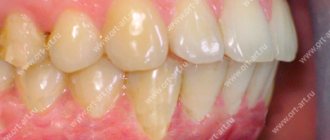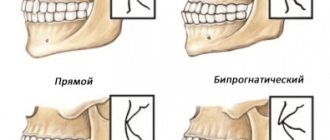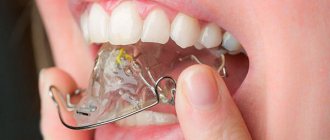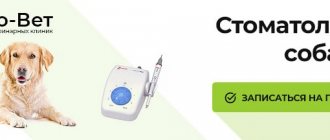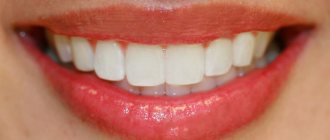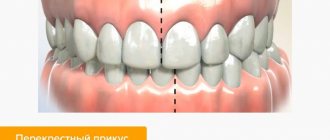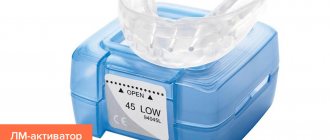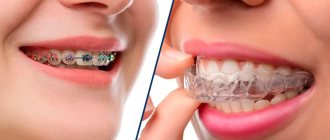What does a pacifier replace?
Already in the sixth month of intrauterine development, the fetus develops a sucking reflex. This fact is often observed by doctors and parents during ultrasound diagnostics: the child holds his finger in his mouth. The development of this skill will directly determine the baby’s survival after childbirth: how he can suck breast milk, how quickly he can adjust the mother’s lactation and, accordingly, will receive the nutrients vital for his existence.
However, this all concerns instincts provided by nature; in life, everything usually happens differently. For example, a mother deliberately or under pressure from circumstances refuses breastfeeding, switching to formula, or sharply reduces the frequency of breastfeeding. Everyone knows that there is no need to suck artificial nutrition out of the bottle, it pours out on its own. But the child’s powerful sucking reflex remains, he worries and cries, and this is where the pacifier comes to the parents’ aid.
In fact, it replaces the mother’s breast for the baby, and then for the older child, and not vice versa, as is commonly believed in our post-Soviet space. It is this imaginary convenience that often makes parents turn a blind eye to the problem of malocclusion from the pacifier. Therefore, if the mother provides the baby with breastfeeding on demand, and not according to a schedule, the pacifier simply will not be needed - his sucking reflex will be fully satisfied.
However, if for some reason difficulties arise with breastfeeding, a pacifier can also bring benefits:
- Breast replacement for formula-fed babies.
- Development of the sucking reflex in premature infants.
- Reducing anxiety and excitability in a child.
- Help with rocking a baby.
It is worth considering that among pediatricians and lactation consultants there is still no consensus on the use of a pacifier and its effect on the baby’s bite.
At what age does a child develop a bite?
Parents rarely think about when a child’s bite begins to form, yet this process occurs from birth and consists of several stages:
- From birth to six months. At this time, the jaws are preparing for the appearance of the first teeth and the correct placement of them during this period is very important.
- From six months to three years - the appearance of a temporary bite.
- From three to six years - preparation of the jaw for the appearance of permanent teeth, the temporary bite is fully formed.
- From six to twelve years, the baby teeth are replaced by permanent teeth, and during this period a mixed bite is formed.
- From twelve to fifteen years, a permanent bite is formed.
As you can see, it is very important to monitor the formation of a correct bite in a child from birth, and not from the appearance of permanent teeth, as many parents believe. Already at the stage of eruption of the first milk teeth, it is necessary to ensure that there is no constant pressure on the jaw, be it a finger in the mouth, a toy or a pacifier. After all, it is for this reason that a child develops an incorrect bite, including the pacifier.
What malocclusion pathologies may appear as a result of pacifier pressure on the jaw:
- Deep (the lower jaw extends far beyond the upper).
- Open (teeth from both jaws do not close together, forming a gap).
- Mesial (the lower jaw protrudes noticeably forward).
- Distal bite (with the jaws closed, the upper jaw moves forward in relation to the lower jaw).
- Crossed (weak development of one of the sides of the upper or lower jaw is observed).
In any case, the sooner the bite is determined, the easier it will be to correct the pathology in the future. If there are obvious problems already at primary school age, it is necessary to use special structures to correct the bite, such as plates, trainers, and at an older age - a brace system.
The optimal period for correcting the bite is adolescence, when the replacement of baby teeth with permanent ones has already occurred.
Orthopedic insoles for longitudinal flat feet
With this type of flatfoot, the longitudinal arch of the foot flattens, causing almost the entire surface of the foot to come into contact with the floor. Often, the intensity of the development of the disease depends on the person’s weight. The larger it is, the stronger the symptoms appear.
Orthopedic longitudinal insoles are characterized by the main feature - the presence of a high arch support. This element supports the longitudinal arch, which helps restore normal biomechanics of the leg:
- Excessive stress is relieved, blood circulation improves, and foot stability increases.
- Pain sensations are eliminated.
- The formation and development of heel spurs is prevented.
Also, insoles must have wedges with which you can change the angle of inclination while walking.
An important characteristic of products prescribed for longitudinal flatfoot is the height of the instep support. Its value is determined by the structure of the foot, the degree of the disease and individually for each person.
It is wrong to purchase insoles at a pharmacy that sells products with average parameters. It is best if a specialist selects the characteristics of orthopedic insoles for you.
The best material for longitudinal insoles is high-temperature plastic. It provides effective arch support and good heel support. A mandatory requirement is that the insole exactly matches the shoe size.
General harm from pacifiers
When parents think about whether the pacifier spoils the child’s bite, it turns out that there are some other negative aspects that this item can bring. Sucking on a pacifier for a long time can cause:
- Refusal to suck milk from the breast;
- Incorrect latching of the nipple during sucking, which can lead to breastfeeding pain for the mother.
- Speech delay, incorrect pronunciation of sounds and words.
- Allergic reaction.
- Delayed mental development of the child.
- Oral diseases.
- Mechanical damage in the mouth and chin area.
However, most pediatricians are of the opinion that using a pacifier for up to six months should not cause serious harm to the baby. After 6 months, the use of a pacifier is undesirable, and after a year it is necessary to reduce this habit in the child.
Types of orthodontic pacifiers
- a regular plate for the prevention of malocclusion,
- with a visor, which promotes the development of the lower jaw, as the child bites the visor with his teeth,
- with a bead: with each swallow, the child involuntarily rolls the bead with his tongue, training his muscles,
- with a flap: the flap prevents the tongue from being placed between the front teeth, preventing an open bite,
- a pacifier that exactly follows the shape of a woman’s nipple: used up to 6 months of age.
Which is less harmful: a pacifier or a finger?
Doctors are unanimous on this issue: it is better to let the child suck a pacifier than his own finger. This is especially true for the period when baby teeth have not yet appeared. There are several reasons for this:
- The habit of thumb sucking is much stronger, because it is always there, you don’t have to ask or look for it like a pacifier.
- An infant who has a particularly strong need to satisfy the sucking reflex may seriously deform his finger.
- A pacifier made of high-quality materials and suitable for the baby’s age has much less negative impact on the jaws.
- The pacifier is easier to keep clean, it is disinfected, and you can be sure that the infection will not get into the child’s oral cavity in this way.
It is better to wean your baby off the habit of thumb sucking as early as possible, distracting him in every possible way with a pacifier or special latex teething toys.
Design and functions of orthopedic insoles
Orthopedic insoles may include the following basic elements:
- instep support - a supporting part located in the area of the longitudinal arch;
- depression in the heel area;
- pelota, or flat cushion (metatarsal) in the area of the transverse arch;
- raised zone in the roll area;
- wedges (internal and external for the anterior and posterior sections) - used to correct insoles.
The design of a particular model is always individual and depends on the characteristics of the foot deformation. Therefore, it is very important to consult a specialist who will help you choose insoles that are suitable for your type of flat feet.
Orthopedic insoles support the foot in the correct anatomical position, perform a shock-absorbing function, prevent the progression of the disease, and reduce the load on the spine. They also optimize the tone of the foot muscles, improve blood circulation, make walking more comfortable and eliminate pain.
Recommendations for using the pacifier
In order for the bite after the pacifier to form correctly and without pathologies, it is enough to comply with the following conditions:
- Do not allow your child to sleep with a pacifier in his mouth; this is easy to track: as soon as the baby is fast asleep, you need to carefully remove the pacifier from his mouth.
- Observe the rules of hygiene: wash pacifiers thoroughly after each use, boil if necessary or replace with new ones.
- Have several nipples; if one gets dirty, you will always have a clean one at hand.
- Buy special containers for storing pacifiers; they are sealed and protected from dirt and moisture.
- Try to give a pacifier only in extreme cases, and only when the child is not hungry.
- Monitor the condition of the pacifier; if there is the slightest crack or break, it must be replaced; if there are no defects, it is necessary to replace the pacifier with a new one every 1.5-2 months.
- Do not use a pacifier for the first time after discharge from the hospital, when the mother’s lactation is just establishing.
- Do not give your baby a pacifier for more than a total of 6 hours a day.
And the most important advice: do not give the pacifier at the first call of the child. You must first determine the cause of the baby’s restless behavior and try to calm him down by satisfying his natural needs - feeding him, rocking him in his arms, changing his diaper, etc. It is also worth noting that in addition to malocclusion, the nipple, if used frequently, can cause more significant harm - disrupt the psycho-emotional contact between mother and baby.
Why is the nipple retracted?
- genetic predisposition;
- pathology of the development of the genital organs (underdevelopment and hypofunction);
- insufficiency of development of the milk ducts;
- diseases of the mammary glands.
Acquired factors for the development of inverted nipples include:
- Complications of various diseases (infectious and inflammatory processes, oncology, etc.);
- Wearing a bra that is too tight and puts pressure on the mammary glands for a long time.
It is worth noting that if there are no visible causes for the development of inverted nipples, you should immediately consult a doctor. The same applies to the situation if, along with retraction, various types of liquid begin to be released from the nipples.
How to choose the right pacifier?
Modern parents are now seeing a huge range of pacifiers, from classic rubber ones to innovative latex ones with orthodontic properties. Which dummy will be correct and less harmful? Let's try to understand these subtle points and consider how nipples differ from each other:
- According to the material from which they are made. It is best if the nipple is made of silicone or latex. Silicone is more stable, withstands mechanical stress, but at the same time it deforms the baby’s jaws more strongly, unlike latex.
- To size. For each age of the child, a certain size of pacifier is provided; usually the manufacturer indicates this information on the packaging; compliance with this condition allows minimizing the harmful effects of the pacifier on the baby’s bite.
- According to the form. Nipples are classic and anatomical (orthodontic). Of course, experts recommend using the latter; they have less of a negative impact on the formation of the jaw apparatus.
- On the basis. It is better to choose pacifiers that have a recess on the base for the nose and chin, so they will not be damaged during active sucking.
Which pacifiers are best for newborns?
Reviews from parents and the pediatric dentist made it possible to rank the most popular models.
Pacifier Nuk (Nuk)
A German-made pacifier is orthopedic in shape, with a flattened papilla and a recess that will prevent the pacifier from falling out of the baby’s mouth.
The soft and flexible nipple puts virtually no pressure on the mouth and teeth. A special depression on the papilla leaves more space for the tongue, facilitating its movement. The special natural shape resembles the mother's nipple, and for sucking the pacifier the jaw ratio is the same as when sucking the pacifier.
Obvious advantages will be the presence of an air valve, the correct shape, which is the prevention of orthodontic pathologies, and the choice of materials.
The only downside is the pricing policy.
Avent pacifier (Philips Avent)
It is the best-selling product among silicone products. This is a classic version of pacifiers that have six holes for ventilation.
This is one of the safest types of pacifiers, because... does not put pressure on the sky. The advantages will be a huge selection by age, completely different designs, and the presence of a protective cap included.
The disadvantages are that the shape is not entirely correct, making it difficult to hold the pacifier in the child’s mouth; due to the presence of ventilation holes, moisture can enter the pacifier itself.
Dr. Brown's
The pacifier of the American manufacturer is unique of its kind. The shape of the nipple is teardrop-shaped and slightly curved; inside there is a special air channel that releases and allows air to pass through, which minimizes the swallowing of air. This pacifier has some anti-colic effect. The main advantage of the pacifier, in addition to quality, is that the kit includes a protective cap with a ventilation system. The price is 360 rubles.
Bibi pacifier
These are pacifiers for creative babies, as modern parents say - a cool pacifier. Characterized by durability and unusual design.
The pacifier is made of two-component silicone, which is durable and safe. The set includes a special holder for an open nipple and a case.
Pros: this is a cherry pacifier designed for large babies (can be adjusted to size), the surface of the pacifier is equipped with fun and bright inscriptions that attract children's attention and do not wear off. Like the Avent pacifier, there are two options - day and night (glows in the dark)
The disadvantages will be the expensive price and the lack of ventilation holes.
Chicco pacifier
Soft but resilient, durable and flexible.
Latex nipples quickly adapt to the baby's temperature.
The pacifier belongs to the orthodontic class.
Chicco pacifiers are easy to clean and can be boiled and steamed.
All the disadvantages of the pacifier lie precisely in the material of manufacture; latex is far from the most durable material.
Pigeon pacifier
Made in Japan, best suited for babies and children up to four months.
It has an unusual orthodontic shape - flattened in the middle part. This is just the ideal price-quality ratio.
The obvious advantage will be the inexpensive price, beautiful design and interesting design that kids will like.
Canpol Babies pacifiers
Polish manufacturer offering high-quality and comfortable pacifiers of anatomical shape. Nipples can be made of different materials: silicone or latex.
Among the advantages are the presence of an air valve, an affordable price and a huge selection of designs. Tommee Tippee pacifiers offer a wide range of different options. These are orthodontic pacifiers that can be selected according to age.
Special holes on the mouthpiece will promote normal air circulation and prevent skin diseases.
How to wean a child off a pacifier?
To avoid difficulties in weaning your baby off the pacifier, it is necessary to study the issue of child development more carefully. Until the age of 7 months, the child needs to satisfy the sucking reflex, which gradually changes to chewing by the age of one year. After all, from the age of 6 months, pediatricians recommend gradually introducing the first complementary foods. At this stage, it is easiest to wean a baby off a pacifier; after a year, this process will already become a bad habit, and not satisfy the sucking reflex.
In order not to create unnecessary stress for the child, the weaning process should be started slowly, gradually reducing the time the pacifier is used. At this stage, there should be no difficulties, because the child develops very quickly both mentally and physiologically, he is interested in everything new, and the research instinct is actively manifested. Therefore, parents can only look for ways to distract themselves from the pacifier, which should now be given only when the baby can no longer be calmed by anything. If you show patience and persistence at the moment, you can wean your baby off the pacifier very quickly and gently.
At the age of one and a half years, if the habit of sucking a pacifier still persists, parents must show the child to a pediatric dentist so that he can determine whether the pacifier can ruin the bite and how strong its effect on the jaw apparatus is.
If a child cannot do without a pacifier after two years, the help of a child psychologist may be needed, because, most likely, the baby is uncomfortable in the environment and the pacifier appears to him as a kind of reassurance and protection.
It is necessary to urgently wean your baby off the pacifier in special cases:
- If he has problems with hearing and speech.
- In cases of mental retardation (under the supervision of a specialist).
- Upon reaching the age of three years.
In any case, there is no universal way to wean off the pacifier; each baby needs a different approach. However, general recommendations boil down to the fact that during this difficult period for the child, you need to provide him with maximum comfort and protection, as well as distract him in every possible way and allow him to develop naturally.
Child oral care
You can soften the effect of the pacifier on the baby's palate and jaws not only by using anatomical models, but also by using special oral care products. ASEPTA Baby products are rightfully considered one of the best children's dental products:
- ASEPTA Baby wet wipes from 0 to 3 years (special finger pads are designed for gentle cleansing and massage of the baby’s oral cavity).
- ASEPTA Baby gel toothpaste from 0 to 3 years (effective prevention of inflammatory processes in the oral cavity and prevention of the development of caries in children).
- ASEPTA Kids gel toothpaste from 4 to 8 years (prevention of caries, inflammatory processes and tartar formation).
- Paste for permanent teeth ASEPTA Teens from 8 years (saturation of tooth enamel with minerals, prevention of caries and prevention of gum inflammation).
Thanks to the wide range of tastes and aromas of ASEPTA products, the child will be happy to brush his teeth on his own. The natural composition of the pastes, as well as beneficial plant extracts and calcium enrichment, makes the series an indispensable oral care product for children. ASEPTA cares about the health of children's teeth!
Sources:
- Study of the clinical effectiveness of the use of therapeutic and prophylactic agents of the ASEPTA series in the treatment of inflammatory periodontal diseases in children and adolescents (I.V. Klimova) Irina Vladimirovna Klimova, Candidate of Medical Sciences, Associate Professor of the Department of Pediatric Dentistry, Novosibirsk State Medical University. Department of Pediatric Dentistry, Novosibirsk State Medical University.
- The use of adhesive balm "Asepta®" in the treatment of inflammatory periodontal diseases L.Yu. OREKHOVA*, Dr. med. Sciences, Professor, Head of Department V.V. CHPP**, Dr. med. Sciences, Professor, Head of Department S.B. ULITOVSKY*, Dr. med. Sciences, Professor A.A. LEONTIEV*, dentist A.A. DOMORAD**, O.M. YAKOVLEV** SPbSMU named after. acad. I.P. Pavlova, St. Petersburg - *Department of Therapeutic Dentistry, **Department of Microbiology
- Clinical experience in using the Asepta series of products Fuchs Elena Ivanovna Assistant of the Department of Therapeutic and Pediatric Dentistry State Budgetary Educational Institution of Higher Professional Education Ryazan State Medical University named after Academician I.P. Pavlova of the Ministry of Health and Social Development of the Russian Federation (GBOU VPO RyazSMU Ministry of Health and Social Development of Russia)
Consumer Reviews
User about ASEPTA TEENS toothpaste Vasilisa (eapteka.ru)
“Asepta Baby wet wipes were very helpful in my time. When my daughter’s teeth began to erupt wildly, one by one, I began to try many children’s pain relievers that I knew. They helped for a maximum of 10 minutes and then the daughter’s terrible “screams” began again. Then I just started going to every pharmacy and asking for the best, most effective product, no matter what the price. And one of the pharmacists suggested these napkins to me; they were even cheaper than the products I had bought before, around 250 rubles. When I read about them on the Internet, I learned that wipes not only help relieve and relieve pain from teething, but also instill daily hygiene habits and disinfect the oral cavity in general. According to the instructions, I wiped my daughter’s entire oral cavity, her gums, her cheeks, her tongue, everything. With these napkins, my daughter became much calmer; of course, I noticed that my daughter was experiencing discomfort in her mouth, but not that much. Now I often take them on the road for myself and my children, when I can’t brush my teeth; for me, this is another plus for these napkins).”
Vasilisa about ASEPTA BABY napkins (market.yandex.ru)
“My teenage son brushes his teeth with this paste. His teeth and gums are very sensitive, so the dentist recommended this paste from Asepta, because... it is low-abrasion, for gentle care. Its appearance is cool, we like it - such an interesting animal is depicted. The paste foams well. It has the taste and aroma of either peach or apricot; sometimes I really want to change my boring mint paste to my son’s. The texture is gel-like, but not transparent - it is used sparingly.”
